Salisbury (Sarum) Probus Club
Sarum Probus Club is an organisation for retired men living in the Salisbury Area.
Previous Meetings 2019-21
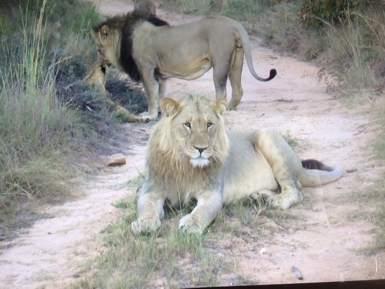
He gave it the title "Four Lodges" because it consisted of expeditions over a vast conservation area while staying in four different lodges.
While seeing close up a whole range of well known African species, he was also able to see some much rarer sights.
Who knows, for instance that elephants will congregate at the place where one of their flock has died and trumpet mournfully to commemorate their departed companion? Who knows that white lions are not just a freak mutation but a real species with a weak genetic line, which can be preserved by careful management? John was able to see creatures great and small; from giraffes towering into the trees to soldier ants, scuttling across the ground, moving in disciplined columns to protect and feed their young. He was able to watch how an adult male lion tries to control the behaviour of growing boisterous cubs often with little success.
John noted how the different environments of rocky hills and low wooded scrubland support different animals and preserve a natural balance. The leaders of each safari trip were well trained and knew how to locate hidden species from tracks and radio communication with other leaders, so nothing was missed. The food and accommodation were good and the views were breathtaking. John's video was able to convey something of the excitement he obviously felt.
There was a retiring collection and members gave generously and John and the present Club President, Dieter Scholz, gave a sum doubling the amount to £392.This increases the money raised by John Gidley to Salisbury Hospital Stars Appeal to over £2000 since he suffered a cardiac arrest in the cardiac unit some four years ago. He was at the hospital to have his pacemaker checked when he collapsed. He stopped breathing and his heart stopped beating. The cardiac team were able to resuscitate him and saved his life. John shows his gratitude by donating money raised by showing his videos. He is willing to show his videos, which are wonderfully produced, to groups. Contact John Gidley for more information. jafgidley@gmail.com
The talk to Sarum Probus Club on 12th April was about the history of some of the
hand guns of the American Wild West and some of the famous and infamous men who
used them. Examples of each type of pistol were passed round for inspection as
they were discussed.
The talk covered pistols from the early single shot flintlock and cap and ball
guns through the first revolvers, such a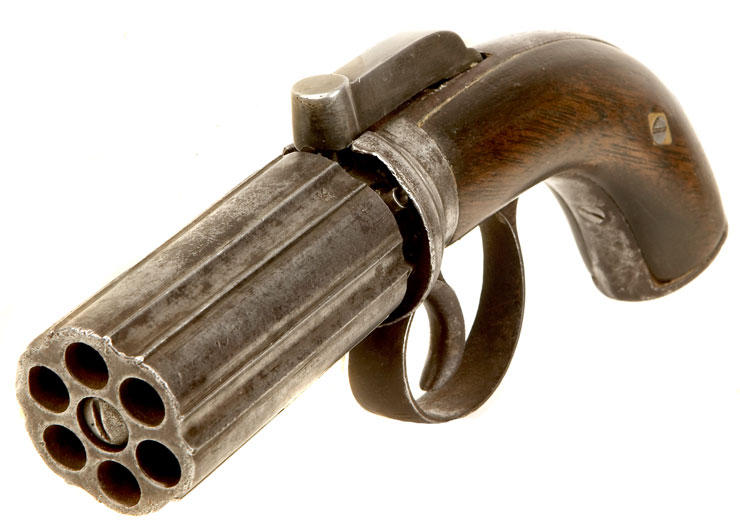 s
the
“Pepper Pot” with its revolving barrels to the Colt range of revolvers from the
early Walker revolvers together with Colt’s “Transition Pistols” and the Colt
Dragoon that these led to.
s
the
“Pepper Pot” with its revolving barrels to the Colt range of revolvers from the
early Walker revolvers together with Colt’s “Transition Pistols” and the Colt
Dragoon that these led to.
The talk continued with the development of the first
“Belt pistols” such as the 1851 Colt Navy. It described some of the interesting
characters who used them. It then moved on to cover the Colt Army model of 1860
and the Colt New Army Model of 1874, more widely known as the Colt .45, the
pistol depicted in a thousand cowboy movies. Again mentioning some of the more
famous true life characters that used them during the Wild West era. Moving on
we then discussed some of the specialised pistols of that time, such as the
fabled Buntline Special owned by Wyatt Earp and the much longer barrelled
Buntline Special issued by the Colt
firearms company. The talk led to a lively debate on the likelihood of the
existence of Wyatt Earp’s Buntline Special, did it exist or was
it another of Ned Buntline’s stories that like so many of his stories are now
indistinguishable from the true facts of Wyatt Earp’s life.
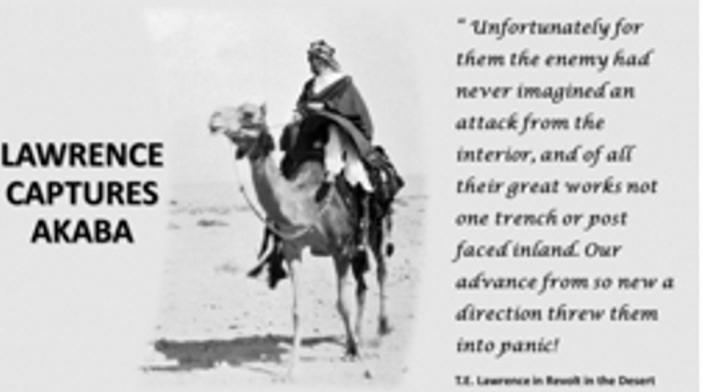 Lawrence is one of those figures hailed as a hero but veiled in a cloak of mystery. Most people know something of his life through the film starring Peter O’Toole but much of his personal life remains hidden.
David Baker of Sarum Probus Club had an interest in him through family links. His mother Anne, who is now 105, met him several times as a child and he served with David’s grandfather, Air Marshal Sir Geoffrey Salmond, in the Middle East during the 1914-18 War. David’s talk focussed on this period of Lawrence’s life.
Lawrence is one of those figures hailed as a hero but veiled in a cloak of mystery. Most people know something of his life through the film starring Peter O’Toole but much of his personal life remains hidden.
David Baker of Sarum Probus Club had an interest in him through family links. His mother Anne, who is now 105, met him several times as a child and he served with David’s grandfather, Air Marshal Sir Geoffrey Salmond, in the Middle East during the 1914-18 War. David’s talk focussed on this period of Lawrence’s life.
Lawrence’s birth was itself unconventional. Born of a liaison between an Irish nobleman and his governess, the couple lived under the surname Lawrence.
He was, by all accounts, an exceptional child who managed to gain a First-Class Degree from Oxford after a year by submitting a thesis about Crusader Castles. He so impressed a don at the University, David Hogarth, that he was invited to join a dig at Carchemish, now in Syria. There he lived as an Arab and became captivated by arab life in the desert. He was recruited by British Intelligence to act as the archaeological cover for a survey of the Negev desert and the port of Akaba.
The Middle East was drawn into the First World war in November 1914 when the Ottomans decided to back the Germans and there was a real risk that they might seize control of the Suez Canal. The Canal was vital for links between the British Empire and the mother country.
Making maps for the British army, Lawrence served under his old Oxford Tutor, David Hogarth who was now in the Arab Bureau in Cairo. Lawrence’s knowledge of Arabic soon made him useful in other ways. In particular, he assisted in negotiations with the Grand Sheriff of Mecca who had asked for British support against the Turks occupying the area. These negotiations led to Lawrence meeting Prince Faisal. Lawrence quickly realised the potential of Faisal as an outstanding leader.
Faisal was establishing himself as a leader of the various Arab tribal groups. He won their support by settling feuds and disputes. Faisal intended to lead the Arabs en masse in a revolt against the Turks. The British Army left Lawrence as a liaison officer with Faisal. Originally intended as a short-term stopgap appointment Lawrence, stayed in the role throughout the War.
He was a man with an extraordinary charisma which enabled him to persuade others they could do what at first seemed impossible. He helped lead the attack on Wejh and played a crucial part in its eventual capture which marked the first great victory of the Arab revolt. Faisal and Lawrence then devised a most daring plan. This was to ride for days through some of the most inhospitable desert to attack the vital port of Akaba from the land. The port was heavily defended against a naval attack and the access by land was thought impossible. But the Arab attack was a triumph.
Lawrence worked closely with the brilliant General Allenby, as he planned and organised his advance on Jerusalem. Lawrence prevented Turkish reinforcements from travelling along the Hejaz Railway by repeatedly blowing up bridges and trains. Then his Arab army swept up the east of the railway to isolate the Turkish rail terminus at Deraa. Allenby meanwhile advanced along the west side of Palestine to the capture of Jerusalem and in December 1917, Lawrence entered the City with him. But Lawrence was anxious that the end of the War would not mean the Middle East simply being carved up by the British and French. In particular, he wanted the Arabs to establish an Arab Kingdom. With this in mind, he was anxious for the Arab army to reach Damascus before the British or French and this they did in October 1918. A government under Faisal was set up but difficulties lay ahead.
The Sykes-Picot Agreement of 1916 carved up the Turkish Empire; it overshadowed the post war negotiations. Lawrence’s hopes for the establishment of an Arab Kingdom were thwarted. The French held Syria. However, Lawrence worked closely with Churchill to redress the balance.
At the Cairo Conference of 1921 it was agreed that Abdullah should become King of Jordan and Faisal should rule Iraq. Lawrence considered his work was done and he cloaked himself in obscurity. But that is another story…….. said David Baker. The war in the Middle East is hardly mentioned in World War commemorations. We recently celebrated the centenary of the 1914-18 War with much emphasis on the Western front but almost no mention of the war in the Middle East. Maybe a reassessment of Lawrence is one way to correct the balance.
Did you have a Kodak Camera?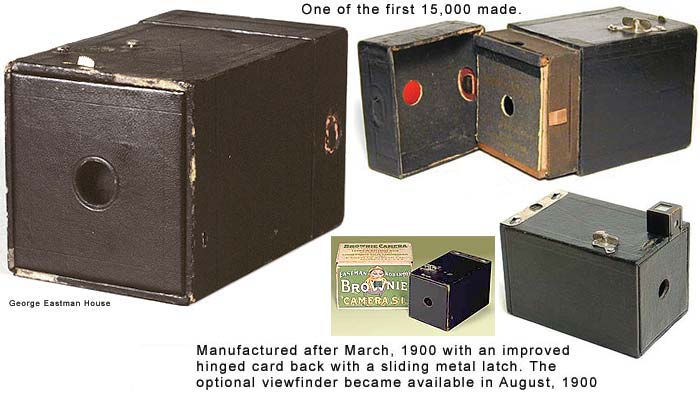
It sprang from the vision of a man called
George Eastman who had become fascinated in the mid 19th
century with the new science surrounding photography. He carried his
photographic equipment around and did his own developing in a light
proof tent, but he had, in his head, a dream.
At a time when photographs
were still made on large, wet plates in ungainly, heavy instruments
he dreamt it would be possible for anyone to have a small, compact
camera. He began in a small way by patenting a coating machine to
coat glass plates more effectively.
With two colleagues, Henry Strong who provided
capital and William Walker who knew a lot about cameras he went on
to develop the first photo film and then a portable camera. Soon his
dream was realised, along with another dream to provide for his
mother who had lost her husband when George was only eight years
old.
So successful was George’s work that the
company called Kodak grew and flourished in his home town of
Rochester, New York State and eventually extended to Europe and
beyond. His company flourished partly because of George’s expertise
but also because he knew how to keep workers happy. He introduced
bonuses based on the firm’s profits which encouraged everyone to
give of their best. At its peak Eastman Kodak employed 145 thousand
people worldwide. There was however a poignancy about George
Eastman’s passing. Having realised his dream, he felt his life was
finished and, in considerable pain with cancer, he committed suicide
in 1932. His words to his followers in the note he left were “To my
friends, my work is done.” Such a sad way for his life to end but at
least he was able to feel pride in his achievements.
Kodak continued to grow after George Eastman’s
death. In fact the company grew so much in self-assurance that it
failed to see the changes that were on the horizon. Although the
company developed into movie films, x rays and a range of valuable
uses, it never prepared fully for the challenge of the digital age.
A company that had seemed set fair for the future started to lose
ground to competitors and, after a series of poor investments and
management errors, was forced to file for bankruptcy in 2011.
Dr Mike Pointer worked for Kodak in its happier
days in Harrow, England for 28 years until 1997 and because of that
is well placed to tell the Company’s story.
He related to Sarum Probus
Club the rise and fall of his old Company’s fortunes at our meeting
on 13th September.
The name Kodak survives. It was originally
chosen, not because it had any special meaning but simply because
the word was clear and distinctive. It is still heard of in the
realms of movie film but it isn’t in the forefront of our minds
anymore. To me though it does still conjure up memories of a Brownie
127 and the excitement as I waited to see how well my black and
white pictures would look when I picked them up from my local
chemist shop. A fascinating story and happy memories which many of
your readers will doubtless relate to.
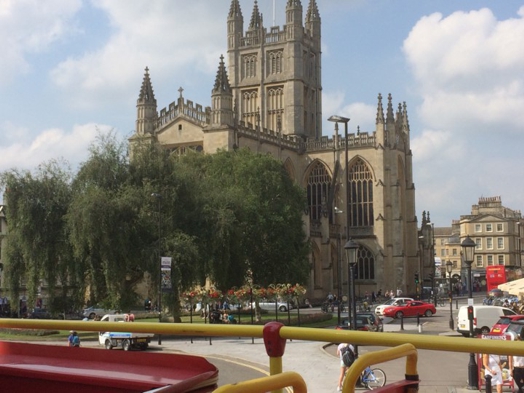
On 23rd August at the Sarum Probus Club one of our members gave an interesting talk on the City of Bath. He mentioned his fascination with the City from childhood, partly because it seemed such a contrast to the bombed-out area of South London where he was born.
He went on to describe briefly the history of Bath from its alleged foundation by King Bladud to the surprise destruction of many of its buildings by enemy bombers in the Second World War.
He had thought at one time of living in Bath but had chosen Salisbury instead. He was asked why? Partly it was because of his own past associations with Salisbury – he was a student at Sarum Theological College from 1970 to 1972.
Subsequently his children had grown up and made homes for themselves, one in Malmesbury and the other in Weybridge - Surrey and Salisbury seemed a good place to be, halfway between the two.
But there were other reasons. Bath is beautiful with its spectacular Georgian architecture which is striking and grand but, in order to build that the old medieval past had been largely knocked down.
Salisbury, on the other hand has preserved much of its medieval past and, although it is not so striking and grand, has an atmosphere which is personal and attractive. Bath has its Roman Baths and Pump room and Assembly Rooms. Salisbury has its Cathedral and Close; Bath is brash and grand while Salisbury is personal and intimate.
For
that reason, even if his children moved from their current
locations, he would still prefer to live in Salisbury. I am sure
your readers would feel the same. Or would they have other reasons?
After all, it is reckoned to be the best place to live in England.
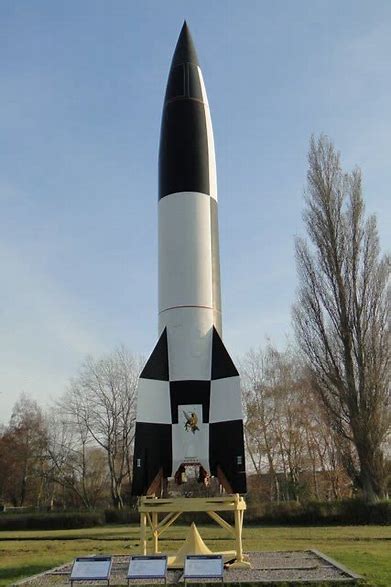 |
On 27th September, David Vokes, from Gillingham Probus Club, gave us a very detailed and comprehensive talk on the V2 rocket. He had grown up in South London, born more or less when the last V2 rocket fell but had always been fascinated by the technology involved in those fearsome weapons.
V2 rockets were turned on England, particularly London, between 8th September 1944 and 27th March 1945, when the launch sites were overrun by the Allies. They succeeded the V1, which was more or less a pilotless plane. The V2 on the other hand was a rocket which was propelled up into the stratosphere and then, once its fuel had been burnt up fell at a phenomenal speed back to earth and exploded on impact. It descended so rapidly that it could not be intercepted, and it landed before the sound of its approach could be heard.
Dave detailed the research done in Germany between the wars to develop a rocket engine that would use liquid fuels rather than the solid gunpowder type products found in bonfire night rockets. There was much early scepticism about the whole notion of rocket power but Hitler became impressed when he saw the prototype tests.
Fortunately the V2 was not brought into active service until the later stages of the War. Who knows what would have been the outcome if it had been used in 1943 rather than 1944? Would D Day have been even possible? RAF reconnaissance identified the early sites and heavy bombing restricted output and eventually the advancing allies were able to put an end to further launches.
The scientists who created this new weapon were eventually taken to the USA and Russia and they spearheaded the subsequent space rocket and missile programmes in both countries.
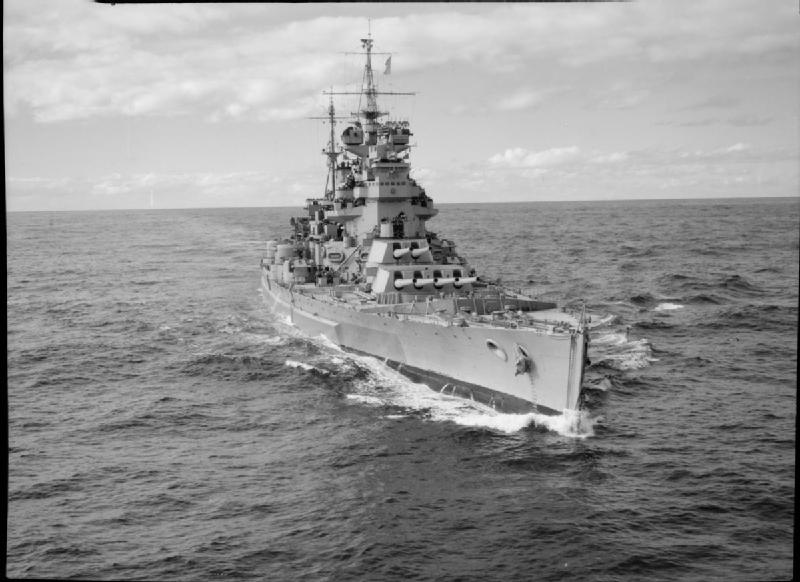 |
On 11th October Douglas Parish gave us a talk entitled, "Experiences".
Doug
said he would speak about his life, which could roughly be divided
up into five parts. He would speak today on the first two. He
proceeded to give a fascinating insight into the problems faced by a
family with the Head of household in the Royal Navy, away at sea for
two or more years at a time. Doug reckons that, in his first
fourteen years, he saw his father for less than five years. Mother
became the dominant figure in the family although she tried to adapt
her role when father came home.
On the
other hand, having a father who was a naval officer had its rewards.
He was able to get a close-up view of occasions like Fleet Reviews.
Particularly memorable was the Kings Silver Jubilee in 1935, with a
buffet the like of which Doug has never seen before or since. He
also was able to go into the Naval Dockyard where his father was
working and saw ships’ mechanisms at first hand. So he developed a
passion for engineering.
Doug
described war time at school in Plymouth and the presence of a
German evacuee student who seemed able to help the English students
with their German more successfully than he managed his own. They
did better in the German exams than he did.
War was
a mixture of excitement and the unexpected. Doug described being
inside his house when it was hit by a parachute bomb and the roof
was blown off. Furnishings were blown down the garden but,
miraculously, his baby sister, in her pram in a back-downstairs
room, was safe.
In 1942
Doug himself joined the navy and went for training on a three year
course near Plymouth. In mid course the naval students had to spend
8 months at sea. For Doug this coincided with the Normandy landings
in June 1944, and his ship stood off Sword Beach giving artillery
support to those landing.
At the
end of the war Doug transferred to the aircraft engineering branch
of the Navy and so began a career, after a training programme which
brought its own stresses and strains, as an aircraft engineer.
Thank you Doug for a very interesting talk.

On 8th November our Branch President, Richard Ballard, gave a presentation on welding. It was entitled “A Brief History of Welding,” and described his own links with the profession.
Although initially an Agricultural Engineer, Richard, under the influence of his superior Les Peach, who specialised in welding, developed an interest in the subject. He learnt to MIG weld at the Welding Institute and went on to do demonstrations in rural areas.
When Richard moved to Salisbury he joined the local branch of the Institute of Welding. This was an organisation developed from the early twentieth century to set standards in welding practice and train new welders. Its HQ is at Great Arlington Hall near Cambridge. Eventually he was elected to the local Branch Committee and became Branch Secretary and then Chairman.
The Welding Institute had a varied programme of interesting lectures on welding related subjects. In its heyday it met in the Polygon hotel in Southampton but in later years struggled to attract members and the branch finally closed in 2010.
Welding, Richard explained, is basically the science of joining substances, predominantly metal, together. It involves, for instance, fusing two pieces of metal into one by heating the join between them and melting them together. It was started in pre-history by heating two pieces of metal to melting point and bashing them together, so called “fire welding.” The welds however were not very strong as the joints absorbed all sorts of impurities from the air.
Welding only developed with the discovery of electricity and the ability to create constant heat from an arc between the welding tool and the metal being welded. By 1908 welders had discovered how to shield the heated metal from the corrosive gases in the atmosphere by using a wire coated with flux which melted and ran over the weld.
Welding became more efficient with the development of machines to continuously feed coated wire and by the use of gases, instead of flux to protect the weld, especially when used indoors. Welding is so much a part of our world that almost nothing of any size can be made without it. The search for improvements to methods goes on.
A variety of questions showed considerable interest among Branch members.
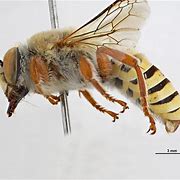
On 22nd November, Richard Rickitts, Editor of Bee Craft Magazine gave a presentation on Bees and Beekeeping.
Richard came into beekeeping after a career in film special effects.
He first introduced us to the incredible physiology of the bee. Each bee has 5 eyes and 2 of these eyes on the side of the head have 4,000 separate lenses which can be switched on and off to detect a particular colour so that the bee can immediately spot the type of plant it is searching for. Three eyes on the top of the head enable the bee to navigate and detect ultraviolet light from the sun even if the sun is covered with cloud. Its antennae are incredibly sensitive and enable the bee to detect oxygen, carbon dioxide and chemical signals.
Richard told how the bee produces food substances, in particular royal jelly which determines whether the bee grub being reared will become a worker or a queen.
We were given a brief history of bee keeping from drawings on caves in Valencia, through the fascinating way the Egyptians reared bees in clay pots to the modern use of sophisticated hives with removable compartments for the storage of honey and wax.
One fascinating fact we learned was that there are congregation points around the country where on particular days of the year drones and queens assemble for mating. Why particular places are chosen and why particular days are picked out, which all the hives of a wide area know about, lies beyond our comprehension at the present time.
Richard told us that the honeybee originated in Europe and was unknown in America, Australia or Asia until Europeans took swarms with them. Now disease has decimated many colonies in Europe, beekeepers are restocking from the New World.
We were told not to be too quick to tear up plants like dandelions which are a good source of nourishment to bees emerging after a long, cold winter.
Finally, we were asked to support local beekeepers by buying their honey, which is pure and unadulterated, unlike much of the processed honey found on shop shelves today. It was a fascinating talk and one that gave everyone much to think about!
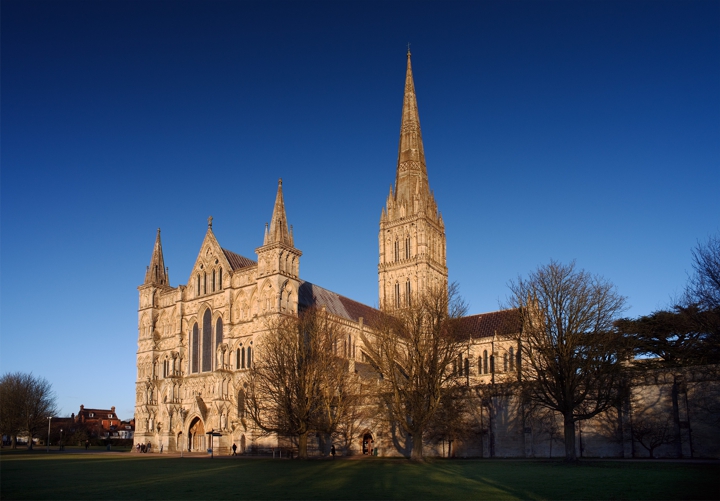
On 24th January 2020 Gary Price spoke to us about his work.
Gary has worked at the Cathedral for over 33 years, beginning as an apprentice, then as a stone cutter for 25 years. 7 years ago he took on his present job as Clerk of Works.
He gave a brief history of the original cathedral at Old Sarum, and the conflicts between military and Church which led to the move by the Bishop down into the valley in 1219. The site chosen in the valley was in many ways ideal as it had a 27ft foundation of gravel sitting on a solid bed of chalk.
The Lady Chapel, which was built first in 1220 is now the last to be restored. Gary mentioned the speed with which the Cathedral was built and the fateful decision to build the iconic spire in 1310. This added 6 and a half thousand tons of stone to a building that had not been designed to take it.
The tower was buttressed inside and out, other work was done over the centuries which meant the spire stayed in place when it could well have crashed down into the Close. Strengthening work was still being done as late as 1939 when corner circular staircases in the tower were filled in with concrete.
In recent years repairs to eroded stonework have been the main concern. The top 30 ft of the spire was renewed in the 1950’s but major work did not begin until the Spire Appeal was launched in the 1980’s, with Prince Charles as Patron. After the Spire the West front was repaired and statues renovated or replaced, with others being added. Gradually other areas have been restored with the east end coming last.
There are still over 1400 stones to replace, each one needed careful preparation. Gary described how his team of 21people, including masons, glaziers, a plumber, an electrician go through a carefully laid down sequence of work cleaning old stone, making templates and then cutting and carving the replacements.
We were shown the large variety of tools used by the masons, in many ways similar to their medieval predecessors, but with tungsten for chisel tips instead of just sharpened steel.
Gary went on to describe other interests he has at the cathedral, like the peregrine falcons which nest on the tower top and keep the pigeon nuisance down. He is also involved with erecting and dismantling the enormous Christmas tree and hanging exhibits for festivals.
This year is the Cathedral’s 800th year and a full programme of sculptures, flower festivals and shows is planned. He urged us to find out more and take part and also consider sponsoring one of the 1400 stones still to be placed on the east end. This was a first class talk both in information and presentation and those present appreciated it greatly.
On 14th February 2020 John Whitehouse, one of our Branch members spoke about the “Ginny Rings” of Shropshire. John explained that, for various reasons, he had been unable to go to University while in his teens, but the opportunity arose when he was made redundant in later life to do a course at Bournemouth University on “Heritage Conservation.” John seized the opportunity.
Part of the course involved doing a work placement and John went to help his brother-in-law who was developing an old farm site at Faintree Hall in Shropshire.
He soon noticed a strange round building attached to a barn and was inquisitive to find out its history. He was struck by the beautiful roof purlins and beams which showed this was more than just a shed knocked up for storage,. He discovered it was what local people called a “Ginny Ring,” a structure erected to protect horses who walked round and round turning a drive connected by cogs and spindles to machinery in the adjacent barn.
The Gins were usually used to drive threshing machines between about 1780 and 1850 and could reduce the cost of threshing by about half. Some were driven by a two or more horses and were then able to drive multiple machines at the same time. The horse driven gins eventually fell into disuse with the development of the steam engine for farm work.
John decided to build his dissertation around an investigation of similar buildings in Shropshire, determining how many still existed and what their current state was. He devised data sheets to collect information.
It turned out that, out of over 200 originally built, only 19 still survived in 1997 (when this survey was undertaken). The 19 were now all used for a variety of things, garages, storage, pig sties. Some current owners were reluctant to allow John access, usually because the buildings had been changed without proper planning permission. A few had even been demolished on the grounds that they were now unsafe. Telford council had shown enterprise and imagination by turning one into a dining room as part of a farmhouse conversion to a Rest Home. Many of the original features had been retained.
These covered gins are found in the North of England and Scotland and are almost unknown in the south where the horses were not thought to need protection from harsh weather.
A range of questions followed John’s talk and, as time permitted he went on to speak about some interesting aspects of work he did in the die casting industry.
Thank you John for a very interesting talk.
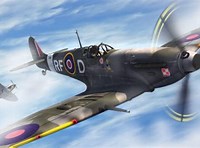
John Smith gave us a talk on the Battle
of Britain in Wiltshire on 28th February 2020. He opened by
pointing out that Middle Wallop is the only Battle of Britain
base still in operational use. The base was originally set up as
a bomber rather than a fighter base.
Gloucester Gladiators were to fight against German Dornier 17
bombers. It was assumed that the bombers would come without
fighter escort from German bases. Consequently all radar
stations were set up along the East Coast. With the occupation
of France all RAF tactical assumptions proved completely out of
date. The Gloucester Gladiators proved quite inadequate against
escorting fighters.
By comparison the Spitfire had 8 guns, 250 yards firing distance
and was 104 miles per hour faster. However, the task for the
Spitfires of no 10 group was to intimidate the Irish and help
prevent that the Luftwaffe would get landing rights in Ireland.
Eventually night fighters were moved to Middle Wallop. The Black
Panthers were the earliest fighters equipped with radar. They
also were the most heavily armed fighters. They destroyed about
100 German bombers.
Middle Wallop also captured an enemy bomber and its crew. It
turned out that a German captain deserted with his aircraft and
its crew near Salisbury by crash landing his plane.
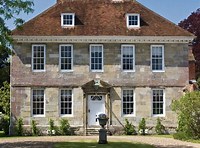
John Potter on Arundells.
On 13th March John Potter gave a talk
on“Arundells.” John began by relating how he came to be
associated with Arundells, through a friend who held a prominent
place on the Board of Trustees. Support was needed by active,
sympathetic people at a very difficult time for the future of
the house and John was drawn in.
The house was originally built in the 13th century at the same
time as the Cathedral and the Canon who occupied it, Edmund
Blunston, would have watched the iconic spire being added stone
by stone. It remained the home of a Cathedral Canon until the
18th century when it was acquired on a tenancy by a merchant,
John Wyndham, who refaced the house and gave it the “Queen Anne”
look we still see today. The house took the name “Arundells”
from John Wyndham’s son-in-law Lord Arundell and the Arundell
family kept the tenancy until 1803. It then had a chequered
history; at one time partly a Jesuit Presbytery, then a Girls’
School and later a Boys’ School. In World War II it was used by
the Red Cross. During this period of change the house fell into
disrepair. It was acquired by the Hawkins’ family in the 1960’s
and they did some restoration work, but the major work of
refurbishment came about after Edward Heath purchased it in
1985.
The house is now a memorial to the life of Edward Heath and a
setting for the many artefacts he acquired during his long and
interesting life. There are family photos and photos of the
famous people he met in the course of his travels as Prime
Minister and as a member of Parliament and Government.
There are souvenirs of his sailing career in the various
versions of Morning Cloud along with paintings by such
celebrities as Churchill, Epstein and Piper. The House and
grounds have many interesting features, including a piano used
by Edward Heath which visitors are welcome to play.
John was glad to see that many club members have already visited
the house but hoped the Club as a group might wish to make
arrangements for a further tour, which he would be glad to lead.
Members asked questions and supplied several personal anecdotes
about their association with the house.
Gerry Lynch in Africa
On 20th May 2021, on Zoom, Peter Davenport introduced Rev Gerry Lynch. Gerry spoke about a visit he made to Africa on a placement to Christ Church, Johannesburg. This placement formed part of his Ordination training and was arranged through USPG, the organisation he had worked for in Africa in 2011.
Gerry decided to go a few weeks early to tour a while and catch up on some old friends from his previous visit. He chose to stay where possible in airbnbs, accommodation provided by people in their spare rooms. This way he came to meet many interesting people, saw life in Africa as it truly is and saved a good deal of money.
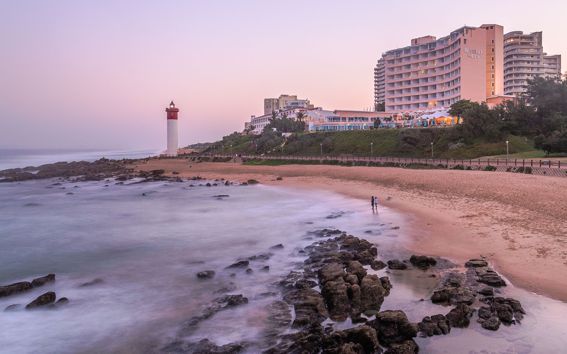
The quiet, reflective beach at Durban.
Gerry flew first into Johannesburg and then travelled to Durban, where he found the beaches very pleasant, the people friendly and took some stunning pictures. He passed the spot where Nelson Mandela had been arrested at the start of his 27 years’ imprisonment. The spot is marked by a fascinating array of metal rods, representing the bars of Mandela’s prison, but forming the outline of his head when viewed from one direction.
From Durban Gerry decided he wanted to travel to Zimbabwe. He had hoped to go to Mozambique but was unable to get a visa in time. People tried to dissuade him from travelling to Zimbabwe as it was effectively a failed state, with its economy in ruins and endless petrol shortages and electricity blackouts. Gerry chose his usual method of travel, bus. He found the border guards surprisingly friendly and was able to stay at an Airbnb in Harare among people who were struggling to remain happy in the most difficult circumstances. Restaurants still served food in spite of frequent blackouts, and religious life continued – Gerry was able to celebrate his birthday at a Mass in Harare Cathedral. He was fortunate also to see some of the beauty of the country, especially the Victoria Falls from a helicopter. The camera and equipment he was carrying was bulky but it proved its worth in the pictures he took.
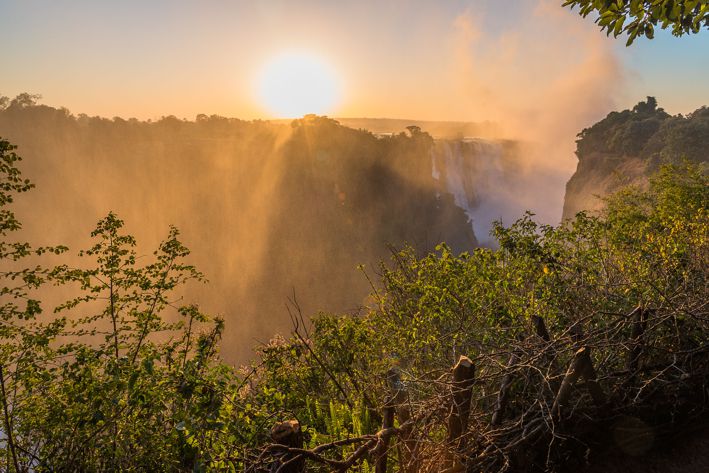 Victoria Falls
Victoria Falls
From Zimbabwe Gerry travelled to Zambia, where he had friends working in the Theological College and one of the highlights of this part of his trip was the visit to the Dag Hammarskjold memorial on the site where Dag’s plane crashed in 1961. The area is peaceful but the silence still raises the question of why he died – was it a conspiracy or just an accident?
Gerry crossed Zambia by train on a 40 hour journey with a carriage full of hymn singing women. Eventually he reached Botswana where it was immediately clear that the people were economically better off. It is a very interesting part of Africa with lions, leopards and many other wild animals in large groups.
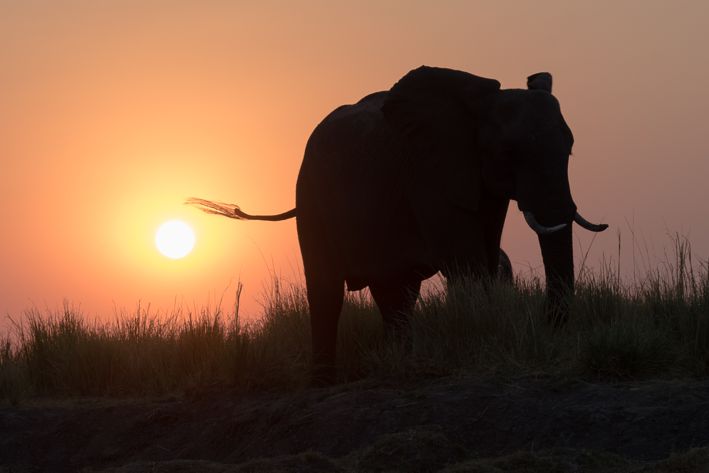 Botswana Wildlife
Botswana Wildlife
Next on Gerry’s list was Namibia, still occupied by many of the descendants of the German settlers who came when the country, known then as South West Africa, was a German possession. The native language of Namibia is very difficult to speak, with its click consonants - hard for westerners to grasp.
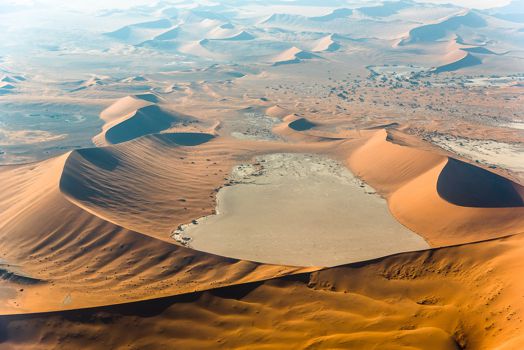
The beauty of Southern Africa's Desert
From Namibia Gerry returned to South Africa and visited Cape Town and Johannesburg, where he stayed with friends. For him the month had been exhausting but a wonderful experience and Gerry was able to convey something of that wonder through his talk and the pictures he showed us.
For more previous meetings 2019-21 2021 2021-2 2022 2023 2004 2025
For more recent talks click here